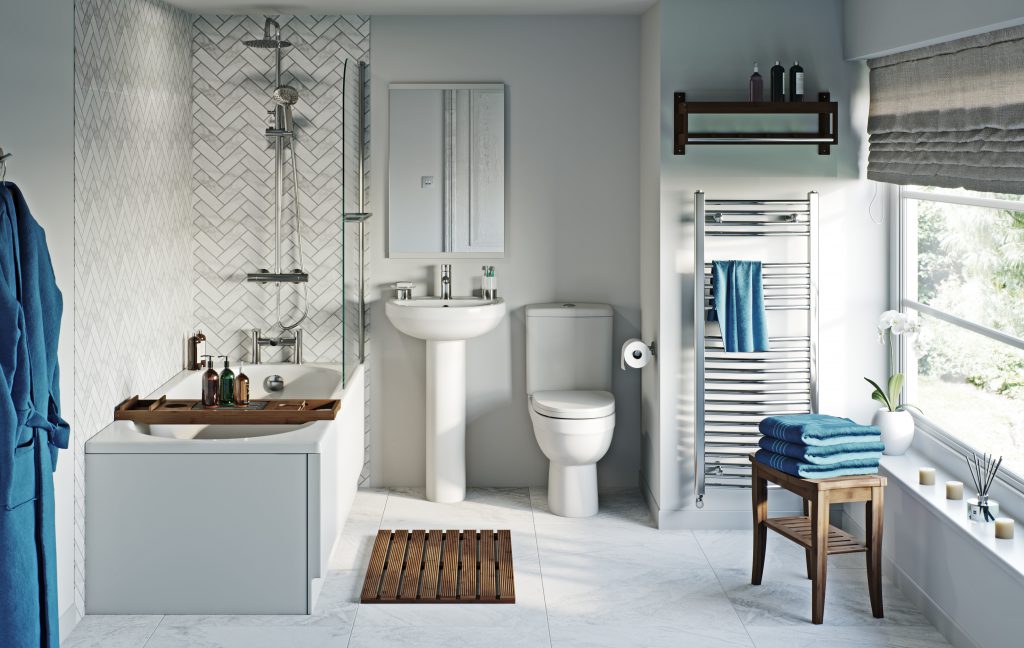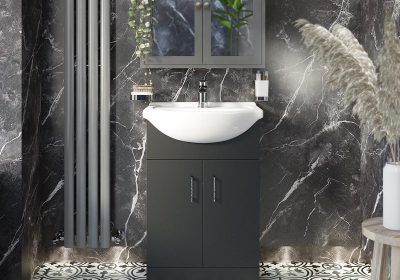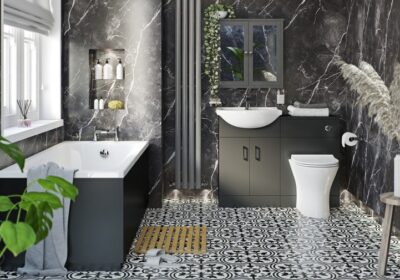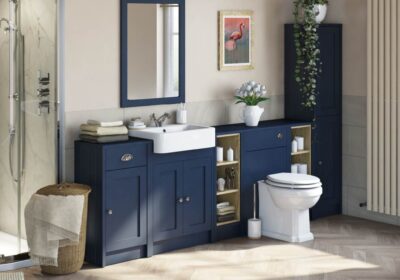Let’s face it, your bathroom has been begging for an upgrade for a while now, and you think it’s finally time to take the plunge and start working on your dream bathroom. But before you start packing away all the items in your bathroom for the renovation, you should know about the 10 common mistakes that even experienced remodelers make. A little knowledge beforehand can save you a lot of headaches down the road. Read on to learn more about what not to do when remodeling your bathroom, and find out how to easily avoid these common pitfalls.
Quick Review
Common mistakes to avoid when remodeling a bathroom include not budgeting enough money, making sure you get the right permits before starting the project, and not planning ahead. To ensure that your remodel goes smoothly, it is important to create a plan and do your research beforehand.
Planning Your Remodel – Overlooking the Long-Term
Planning your remodel is critical to getting the outcome you desire. It’s easy to overlook the long-term and get seduced by instant gratification. While a significant renovation project may appear highly attractive in the moment, it can lead to unwelcome surprises if you don’t consider future projects and upgrades. Experts suggest following four simple guidelines to ensure that your current renovations are beneficial to you and your home for years to come:
1. Visualize when planning – As you contemplate what current projects need attention, think about how to best approach bigger refurbishments. Visualize your ideal bathroom, including color schemes, fixtures, and any other aesthetic details. This will help guide every step, from preparing a budget to selecting materials and labor.
2. Check for existing damage – Ensure that any damage caused by wear and tear or previous DIY projects has been uncovered before beginning work on new renovations. Plumbing or electrical elements should be inspected, particularly if the bathroom is quite old. By checking first and taking care of problems now, costly repairs down the line can be avoided.
3. Research available products – Researching the latest products available from major bathroom product provider groups such as KOHLER, Moen, or Delta can be beneficial for staying on budget yet still achieving attractive results. Consider both trends that show no signs of waning but also emerging “green” products that are both stylish and good for the environment.
4. Consider energy efficiency – Low-flow toilets, showersheads, and sink faucets not only look great but also help lower water bills significantly over time while also conserving precious resources needed elsewhere in the world. Make sure to select ENERGY STAR®-qualified options which reduce energy costs while remaining stylish choices perfect for any bathroom reno project.
Before beginning any bathroom remodeling project, long-term planning is essential for avoiding unexpected curveballs which not only increase costs but also delay completion timelines – important considerations during summer months when humidity levels peak! With these four tips in mind, you’re ready to move onto the next step of your remodel – failing to plan for future renovations.

Failing to Plan for Future Renovations
When it comes to bathroom remodeling, failing to plan for future renovations can be a costly mistake. On the one hand, planning for potential upgrades down the line can help you to save money in the long-term by preventing mistakes due to lack of foresight. For instance, investing in a foundation that can support new fixtures and technology could come in handy if you’re looking to upgrade several years after your renovation. On the other hand, over-planning for potential changes to your bathroom can lead you to overspend on features that you may never end up making use of. When creating a budget for your bathroom remodel, consider possible future expenses but avoid purchasing any unnecessary or overly expensive add-ons.
While it can be helpful to think ahead when designing a bathroom renovation, sticking to a budget is essential. In the next section, we’ll discuss how you can remain financially conscious while still achieving your desired design goals.
Sticking to a Too-Stringent Budget
When it comes to bathroom remodeling, sticking too tightly to a budget can be one of the most common mistakes you make. While it is important to govern your spending, setting limits that are too strict can mean inadequate features or poor quality resources that don’t do their job properly in the long run. On the other hand, if your budget isn’t realistic and you don’t have enough money to complete the project, improvements could be left undone and eventually come back to bite you.
On one side of the argument, if you are able to stay within a restrictive budget then you will probably have more money which can go towards additional home improvements or paying down debt. Additionally, having a tight budget may encourage smarter decision-making and prevent rash purchases.
However, cutting corners when renovating a bathroom can lead to bigger problems. If you purchase cheap materials then they may lack essential safety features such as anti-scald protection for faucets and showerheads or adequate insulation for pipes in cold climates. Additionally, opting for cheap fixtures often means reduced water pressure or short life spans. Furthermore, it is also important to hire qualified professionals with experience in bathroom remodeling as this will ensure that any renovations are completed safely and efficiently.
Before starting any project it is paramount to solidify a realistic budget based on your lifestyle and needs. This way, you are able to spend an appropriate amount on the various components of your bathroom remodel without sacrificing quality. The next step is making sure that your resources don’t compromise safety standards or reliability – a key factor when choosing materials when remodeling your bathroom.
Choosing cheap materials is one of the biggest mistakes you can make during a bathroom remodel. Making sure that quality preludes cost is essential when creating an enjoyable and safe environment while avoiding future costly repairs.
Crucial Points to Remember
When remodeling your bathroom, it is important to develop a realistic budget but also avoid cutting corners to save money as this can lead to problems and costly repairs down the line. Quality of materials and appliances should be prioritized above cost in order to maintain a safe and reliable environment. Hiring experienced professionals is also essential in ensuring renovations are completed properly and efficiently.
Choosing Cheap Materials
When considering a bathroom remodel, many homeowners think that the cheapest materials are the way to go. While some cheap materials can be used in certain situations, it’s important to understand that cutting corners comes with consequences. Cheap materials can have lower quality and won’t last as long. Furthermore, some may be made from materials that are toxic and can present health risks.
On the other hand, there are certainly situations when choosing “cheap” is a smart decision. If you change your mind frequently or just want something inexpensive until you decide on the final design, opt for less expensive materials such as paint and tile that won’t break the budget but still provide good performance. Many people chose to go with cheaper fixtures if they are sure of their chosen design since these items will require changes less often than other materials.
In the end, it’s up to each homeowner to decide when “cheap” is an acceptable option; balance quality, safety and durability against cost when making any purchase. To ensure you make the best decisions it helps to consult a contractor and stay informed about material trends in terms of both quality and cost.
Now that we have discussed choosing the right materials for your bathroom remodel, let’s move onto considering how to effectively plan your space by taking into account your floor plan and space restrictions.
Ignoring Your Floor Plan and Space Restrictions
When planning a bathroom remodel, perhaps the most important step is carefully considering your existing floor plan and any space restrictions it may have. Without taking this crucial step, you risk running into unexpected issues down the road, as well as being stuck with an inefficient design.
On the one hand, it can be tempting to plan for some major changes in your bathroom layout, or even shift its location within your home. This could be beneficial if it allows you to make better use of available space or makes your existing space more efficient. On the other hand, changes in your floor plan often require costly re-routing of water and drainage pipes, wiring, ventilation and other structural considerations which might also require additional materials or permits – including general contractors who may need to be brought on board.
Moreover, it’s not just a matter of making sure everything fits; you also need to make sure that it looks good in its final form. Some of the worst bathroom remodeling mistakes involve mismatched fixtures, awkward spaces and layouts that completely fail to meet the needs of the individual using it.
By taking the time up front to really consider how the various elements of your bathroom remodel will come together into its final form, you can avoid costly surprises later and ensure that your end result is something beautiful and functional that you’ll enjoy for years to come.
The next section will discuss an important factor in ensuring your desired bathroom remodel: Choosing the right fixtures and plumbing for your bathroom.
Choosing the Wrong Fixtures and Plumbing for Your Bathroom
Choosing the wrong fixtures and plumbing for your bathroom is one of the most common and detrimental mistakes in bathroom remodeling. Not only may it cause problems regarding aesthetics, but it can also be very costly—especially if done to hang a large vanity or tub. To avoid making this costly mistake, you should do your research well in advance of the project so that you can ensure you are selecting items that fit within your budget and will meet your needs.
When choosing fixtures and plumbing for your bathroom, it’s important to consider both aesthetic and practical factors. From a practical perspective, you need to make sure the fixtures you select will be able to handle the water pressure of your current plumbing system, as well as any changes that may need to be made when you install them. Also, consider changing out old-style toilets with new high-efficiency models that use less water and come with longer warranties. Furthermore, think about replacing fixtures such as showers, bathtubs, sinks and faucets with more energy-efficient options that offer savings on energy bills in the long run.
From an aesthetic standpoint, there are many different styles of fixtures and plumbing designs available to choose from. However, beware of opting for styles that may only appeal to certain design trends that may be short lived. Instead, opt for timeless designs that will last through changing tastes and trends. Furthermore, be careful when selecting hardware finishes as they can change drastically over time depending on their exposure to water and moisture levels in the air of your bathroom.
It’s also worth asking yourself whether you’re going with a classic style or if you prefer something more modern for its clean lines and cutting-edge technologies. Ultimately, make sure you carefully consider all aspects—aesthetics, practicality and your budget—when choosing the right fixtures and plumbing for your bathroom remodel to ensure the most successful outcome possible.
Now that we have discussed avoiding common mistakes when choosing fixtures and plumbing for your bathroom renovation project, let’s move on to the next section which focuses on poor cohesion between materials used in your remodeling job.
Poor Cohesion between the Materials
When it comes to selecting materials, every decision needs to be considered with care. Poor cohesion between materials can often compromise the efficiencies and aesthetics of a bathroom renovation project. Comparatively, cohesive design is achieved when all of the different material selections interplay in harmony, rather than creating discord in the space.
Harmonious material selection must also consider personal aesthetics and preferences. This trade-off can create a challenge when attempting to strike a balance between both technically sound and aesthetically pleasing design solutions. Color palettes, textures, scale, and modern vs traditional elements may all need to be taken into account when making strong material selections.
On one hand there is much greater creative freedom in choosing eclectic materials while still achieving a unified aesthetic, however it must be done with care. Clashing patterns throughout the room can create somewhat of an eye sore that’s unpleasant to look at or use on a daily basis. On the other hand, if an overly branded or exact design matching is desired this could lead to limited options which can limit the space’s capacity for expression and innovation.
Deciding on all necessary materials that complement each other can create a pleasant overall aesthetic – but too much attention to detail may leave little flexibility for spontaneous design changes that emerge during the remodeling process. To avoid this potential pitfall it is important to plan ahead and take time to analyze proofs of concept in order to get it right the first time around.
Creating positive cohesion between materials within your bathroom renovation project is a pivotal aspect of giving any space its own unique character, along with keeping costs from spiraling out of control by avoiding expensive remodeling “redo’s” due to misalignment in terms of the visual appearance you intended to achieve; getting this right sets up your project for success! Now that we know how important it is to get the right materials for our bathroom renovation project, let’s take a look at miscalculating our cost estimate in the next section.
Miscalculating Your Cost Estimate
Miscalculating Your Cost Estimate: Without having a realistic cost estimate, you run the risk of overspending. Many people are drawn in by contractor estimates that appear too good to be true, only to find out later that their remodel is far more expensive than promised. It’s important to research the approximate costs of each material and factor in things like labor, disposal fees, additional services such as plumbing and electrical work, installation/remodeling fees, taxes, and any other variables. You should also factor in some sort of cushion for unexpected problems or costs that might arise, so it’s wise to budget 10-20% more than what you expect to spend just in case. Furthermore, it’s equally as important not to set unrealistic expectations with contractors; making promises with your contractor that you can’t keep financially can both increase the likelihood of cost overages and damage the relationship between yourself and the contractor.
By taking into consideration all anticipated costs associated with the bathroom renovation project and setting realistic expectations with contractors, homeowners can save themselves from putting an unmanageable strain on their financial situation. In the next section, we will discuss the importance of checking references before hiring a contractor for your bathroom remodel.
Not Checking References on Contractors
It is essential to thoroughly research and check references for any contractor chosen for the bathroom remodel. Too often, projects are started without this important step, resulting in unfinished or poor quality work. It is essential to vet the contractor’s previous experience and ask questions like “did the job stay within budget?” or “Was the job completed on time?” as well as talking with past customers about their overall satisfaction. References can come from trusted family members, friends, coworkers, or home improvement stores.
An unqualified contractor can cost expensive mistakes if proper due diligence is not conducted beforehand – such as improper installation of electrical wiring, fixtures, or plumbing that could lead to water damage or a safety hazard. On the other hand, working with a reputable licensed contractor you can trust can help ensure that the project is done correctly and provides peace of mind knowing that their work will pass code inspections saving costly delays in the process.
In conclusion, not checking references on any chosen contractor for a bathroom remodeling project must be actively avoided. This step will help ensure that only qualified contractors are hired who are capable of completing the job promptly and in line with code standards while keeping costs within budget.
Common Questions Explained
What should be considered when planning a bathroom renovation?
When planning a bathroom remodel, it is important to first consider your budget, the space available, and what style of bathroom will work best for your needs. It is also necessary to determine if any type of permits are required before starting the project. Understanding what materials will be used for the renovation is also important so that you can assess their quality, durability and cost. Finally, make sure that you double-check all measurements and plan out details such as where fixtures and fittings will be placed and ensure any electricals or plumbing installations are installed properly by qualified experts. By being mindful of these considerations you can help avoid some of the common mistakes people make during a bathroom remodeling project.
How do I optimise storage when renovating my bathroom?
When remodeling your bathroom, optimizing storage can be key to keeping the area clean and organized. Here are a few steps you can take to optimize storage:
1. Incorporate shelves or wall cabinets into your design. Shelves provide more vertical storage and are great for storing items like toiletries, towels, and linens. Wall cabinets can also serve as both functional and decorative elements in your space.
2. Utilize drawers to organize items like makeup and personal care products. This is a great way to keep the countertop clutter-free and easily accessible items close at hand.
3. Opt for shower caddies or other types of hanging storage that you can hang on the walls or over the tub or shower. These are great for organizing smaller items like shampoo bottles, soaps, and sponges in one easy location that’s out of the way but still easily accessible.
4. Install hooks on the walls for items such as robes and towels. This way they stay off the floor and out of sight.
5. Choose multi-functional pieces such as benches with built-in storage or a vanity withmultiple doors and pull-out drawers. These help utilize space while still providing plenty of storage options.
By taking these simple steps during your bathroom remodel, you’ll end up with plenty of functional, accessible storage options that will keep your bathroom organized and looking its best for years to come!
What are some budget friendly tips for renovating a bathroom?
If you’re looking for budget friendly tips for remodeling your bathroom, there are a number of cost-effective ways to get the job done. Here are some top tips:
1. Paint the walls instead of doing a full renovation. This is an easy and inexpensive way to give your bathroom an entirely new look.
2. Choose frugal but quality materials. Buying cheaper materials often ends up costing more as they may not last as long as higher grade materials and will require replacement much sooner.
3. Consider reducing the amount of cabinets and shelves in your bathroom to save money on purchasing storage items.
4. Make use of natural light coming through the windows to reduce the need for artificial lighting fixtures.
5. Reuse existing fixtures such as bath tubs, sinks and toilets and just refinish them with fresh coat of paint or varnish rather than buying new ones if possible.
6. Shop around for discounts or second-hand items from yard sales or thrift stores if you’re able to find suitable fixtures for your needs at a discounted rate.
7. Opt for ceramic tiles since they are less expensive than glass tiles and mosaics but still look stylish when installed properly.
8. Consider re-doing countertops with laminate instead of marble or granite – this is also cheaper and gives you more flexibility with color options too!
9. Install grab bars in the bathroom that are designed to support individuals with mobility issues but also double as towel hangers which can be useful if space is limited – these come in many different styles and designs so you’re sure to find one perfect for your bathroom decor!
10. Make use of any DIY articles online or books on how to do simple jobs such as tiling, painting and minor repair work yourself which will also help you save money in the long run!



